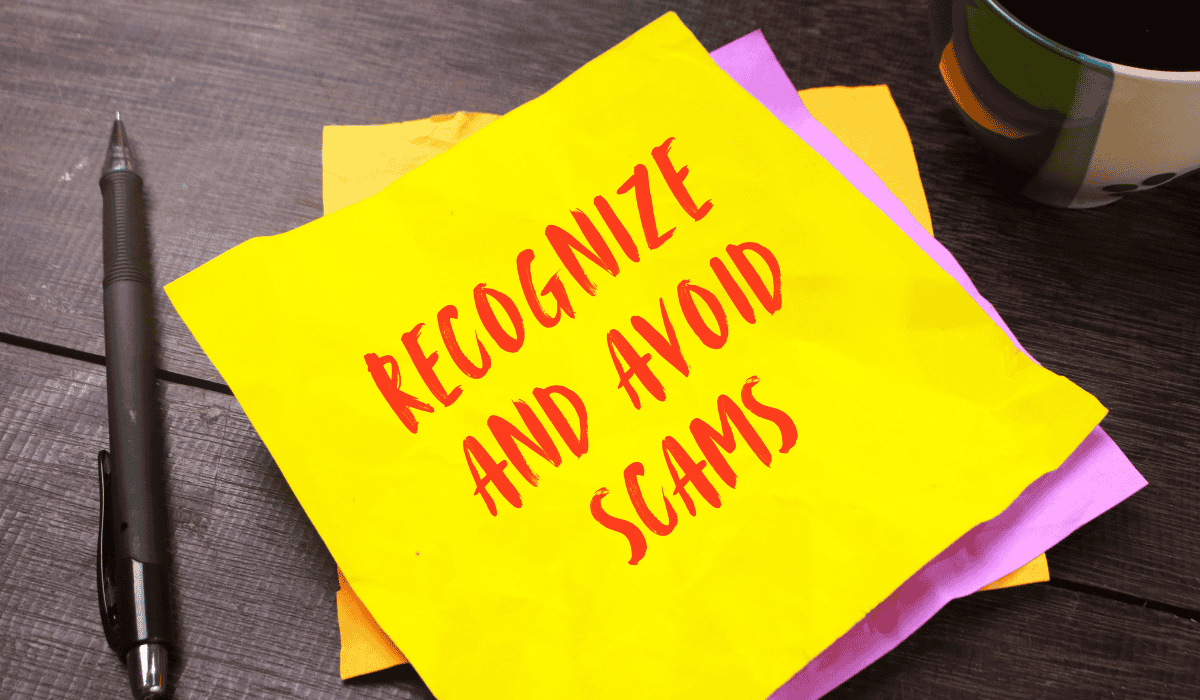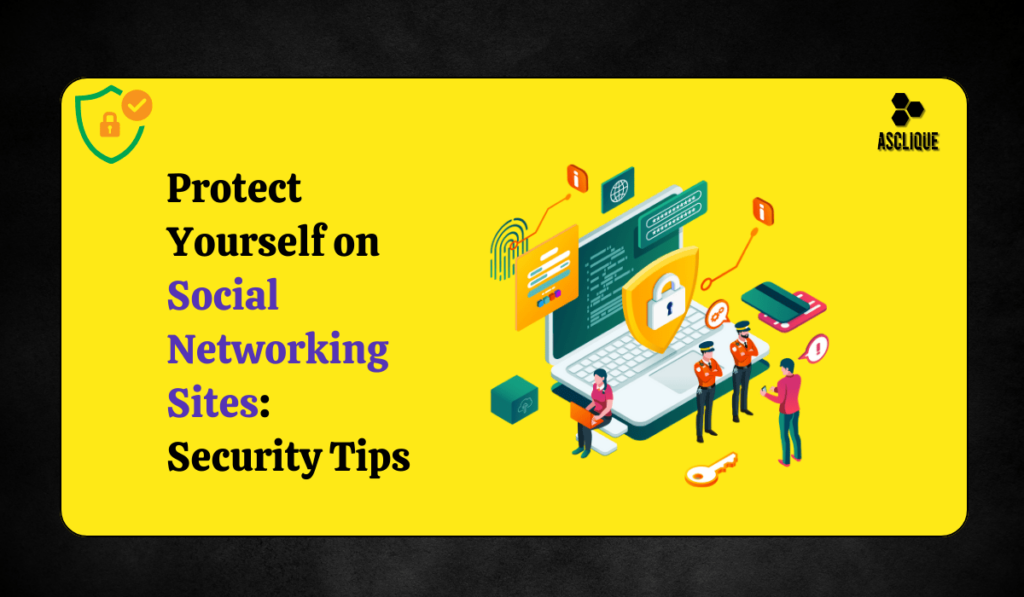Social networking sites have changed the way we communicate, share, and connect with one another. They made the world a global village in which people could build networks, stay updated, and express themselves. The risks that come with the more embedded nature of social networking in daily life include identity theft, cyberbullying, phishing, and privacy breaches. Knowing all these perils and following best practices, one can really ensure a safer online experience. So, how can you protect yourself on social networking sites? This guide has some actionable tips that help you stay secure while still enjoying the benefits of social media.
Understand the Risks of Social Networking
Understand first what the risks are when using social networking. It will give you the opportunity to learn the proper safety measures you need to employ in order to keep your private data and online existence safe.
Identity Theft
- The biggest risk to users of social networking sites is identity theft. Hackers and malicious individuals will steal your information and use it for fraudulent activities, such as opening accounts in your name or even committing crimes. Valuable data include your full name, date of birth, address, or any other personal details; they are valuable to cybercriminals. Therefore, securing social profiles will minimize opportunities for this to happen.
Phishing Scams
- Phishing scams involve cybercriminals masquerading as authentic individuals or organizations to steal from you personal information such as passwords, credit card numbers, or other sensitive data. The scams are mostly in the form of phishing emails, text messages, or social media direct messages that contain malicious links to websites. Being careful and vigilant of phishing tactics will keep you safe from these scams.
Cyberbullying
- Social networking websites are often venues for cyberbullying, harassment, or being bullied online. Cyberbullying can have tremendous effects on its victims, leaving them stressed out, anxious, depressed, or even to engage in self-harming behaviors. Be alert to how you interact with other people online as well as protect your profile from nasty or harmful posts.
Data Breaches
- Social networking websites are often hacked to steal data. Hackers get into the systems and steal the information of the users, sometimes stealing the data of millions of users. This may include your email address, phone number, or even private messages. You can prevent this by keeping track of security news and ensuring that your account settings are updated.
Common Risks
- Identity Theft: Personal data may be stolen to use for fraud.
- Phishing Scams: Spoofed messages coax sensitive information out of you.
- Cyberbullying: Harassing online interactions lead to mental problems.
- Data breaches: Large-scale theft of individual data from services. Being aware of such risks, you can therefore prepare yourself with the appropriate tools and habits needed to be safe while letting loose on social media.
Strong and Secure Password Building

Your password is the very first line of defense against an unauthorized access into your accounts. A weak password, easily guessed is an open invitation to hackers. It is in the interest of security in social networking to create difficult-to-crack unique passwords to hackers.
Strong Password Creation Techniques
- Use a Mix of Characters: The combination of uppercase and lowercase letters, numbers, and symbols will make your password stronger. The more varied your password is, the harder it becomes to guess.
- Example: J5@k9!#Yt2
- Avoid Predictable Choices: Common passwords like 123456, password, or personal details like your pet’s name or birthday are easy targets for hackers. Avoid using these predictable options.
- Opt for Longness: If the passwords go above 12 up to 16 characters, which are hard, the hackers require much time trying to guess passwords.
- Update Per Period: Another habit is changing the passwords after some given period, where a few people update after detecting any breach or unauthorized activity.
Helping Tools :
- Password Managers: These tools securely store your passwords and generate strong ones for you. Password managers like LastPass, 1Password, and Dashlane make it easier to maintain unique, complex passwords for all your accounts.
- Two-Factor Authentication (2FA): 2FA adds an extra security layer to protect your accounts. Even if someone manages to get your password, they won’t be able to access your account without the second authentication step, like a code sent to your phone.
Customize Your Privacy Settings
The most significant way to be protected on social networking sites is to personalize your privacy settings. The ability to decide who sees what on your site and your profile allows you control over who is viewing your posts, personal details, and activities, helping you to protect your privacy.
Using Privacy Settings to Your AdvantageUse a VPN (Virtual Private Network): A VPN encrypts your internet traffic, making it much harder for hackers to intercept your data.
- Limit Audience: Always set your posts to be visible only to your friends, close contacts, or specific groups. This way, you minimize the exposure of personal information to unknown people.
- Disable Location Sharing: Most social media sites allow users to share the location. That can be of great help because it lets one’s friends know where they are, but again, it does pose a huge security risk, as possible stalkers can be able to pinpoint your real-time location. Disable location tracking.
- Review Permissions: Take the time to review and manage the apps and websites connected to your social networking accounts. Remove any unnecessary or suspicious permissions to minimize potential vulnerabilities.
Think Before You Share
When you are oversharing, the risk is pretty high, getting compromised. Any hacker, scammer, or even malware can get a hold of information that you have released into the public domain. So, it is pretty important to be careful about what you share and how you share it.
Avoid these examples of oversharing:
- Real-Time Locations: Uploading photos while on vacation or posting your plans to go out of town can alert burglars that you are away from home and they will target you more likely during that time.
- Personal Information: Do not post personal information about yourself such as how to find your house, your telephone number, and financial information since these may be stolen for identity fraud or entry into your accounts.
- Sensitive information: Be extremely careful while sharing images of documents that contain passports, IDs, and any other identity records. Malware people can make a duplicate version of the photo to pretend or even commit fraudulent activities.
By being critical of what you share on the posts, it is still possible to share experiences but minimize risks from oversharing.
Recognize and Avoid Scams

Social media is infested with scams such as fake giveaways and phishing. How to identify and avoid these is an important aspect of protecting your online presence.
Some Common Scams
- Phishing Links: Most common in the form of a malicious email, SMS, or a direct message in the form of links to phishing sites that can take away your data.
- Impersonation: Fake profiles of your friends and family, and even celebrities can be created. It tries to pretend to be your connections or your well-wishers.
- Too-Good-To-Be-True Offers: Scammers usually offer you something you cannot believe – too good to be true – gifts or a good job in return for some piece of personal information. Be wary whenever something is presented as too good to be true.
How to Guard Yourself
- Never click on suspicious links: Never open an unsolicited link from an unknown sender. Make sure to know who the sender is before clicking the link.
- Verify the sender’s identity: If receiving a message from a friend or family member that is out of character, always try to identify who the sender is through other forms of communication.
- Report fraudulent profiles: If you come across fake profiles or scam accounts, report them to the platform immediately. Platforms like Facebook, Twitter, and Instagram have dedicated reporting mechanisms to handle such incidents.
Knowing how to identify the scams and how to react when you meet them will help you avoid fraudulent traps and other dangers that perpetually exist in the online world.
Monitor Account Activities
Monitoring your account regularly will make it very easy to note down the unusual activities or for that matter, unauthorized activities. You can respond to security issues before they exceed hand by keeping alert.
How to Monitor:
- Check login history: All social networking websites provide you with the login history of the last time a login was done along with the type of device and the location. This helps keep track of such suspicious activity and prevents such events.
- Look into notifications: Most social sites provide you with alerts regarding attempts to log in through unusual sources or passwords, so be sure to check them and keep abreast of the status of your account.
- Audit Connected Devices: Regularly review the devices linked to your account. Delete the ones you are not using and are unknown since they can hack your account
Limit the Use of Public Wi-Fi or Use a VPN
Public wi-fi networks may be convenient but they are super insecure. Hackers may easily decode your data transfer and access social media accounts that could contain confidential information.
To remain safe with Public Wi-Fi
- Avoid logging into sensitive accounts: Avoid logging into your social media accounts or any other platforms that have sensitive information while using public Wi-Fi.
- Use a VPN: It encrypts your traffic, making it harder for hackers to access your data.
- Log out from your social accounts: Always log out from your accounts once done using them on public networks to reduce the risk of unauthorized access.
Conclusion
Social networking sites are a good avenue of communication and connecting, but can be a high risk if one does not take responsibility in handling them. You will be able to enjoy all the benefits social media has for you while maintaining your personal information and privacy once you know how to protect yourself on social networking sites.
FAQs
Why do I need to secure my social networking accounts?
You secure your privacy, prevent unauthorized use of your details by others, and thus you avoid the risks of potential identity theft or loss of finances and reputation.
How to know that I have accounts with fake identities in social media?
Fake accounts can be characterized with generic images, low activities, or even messages that look suspicious and strange. Check accounts before accepting invites.
Is free public internet access through public Wi-Fi safe for using in social networking?
No, public Wi-Fi is not safe and may result in your exposure to hackers. Either use a VPN or do not log in while using public connections to sensitive accounts.
What should I do if someone hacks my account?
Change immediately, enable two-factor authentication and reach out to the support service of the website for further measures.
How often should I check my privacy settings?
Review your privacy settings regularly, every 3-6 months or after big platforms have major updates to ensure that they align with your security needs.

